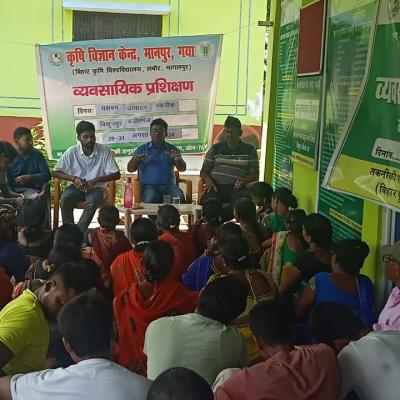The Impact of Cattle Farming in Agriculture
................................................................................
Cattle farming has been an integral part of agriculture for centuries, playing a significant role in sustaining rural economies and providing essential resources. For organizations like NASP Farmer Producer Company Limited, promoting efficient cattle farming is crucial to boosting agricultural productivity and supporting farmers. Let’s explore the various ways in which cattle farming impacts agriculture.
1. Economic Benefits
Cattle farming contributes significantly to the agricultural economy by providing milk, meat, leather, and other by-products. Dairy farming, in particular, generates a steady income for farmers and enhances food security. Moreover, cattle farming creates employment opportunities in breeding, feed production, transportation, and processing industries.
2. Soil Fertility and Organic Farming
Cattle manure is a natural fertilizer that enriches soil with essential nutrients, promoting organic farming. Unlike chemical fertilizers, cattle manure improves soil structure, enhances moisture retention, and fosters microbial activity, making farmland more productive and sustainable.
3. Draught Power for Small Farmers
In many rural areas, cattle still serve as a source of draught power for plowing fields and transporting goods. This reduces dependence on expensive machinery and fuel, making farming more cost-effective for small and marginal farmers.
4. Sustainable Agricultural Practices
Integrating cattle farming with crop cultivation promotes sustainable agriculture. Practices like mixed farming and rotational grazing help maintain ecological balance by reducing soil erosion and improving pasture quality. Additionally, cattle contribute to carbon sequestration, mitigating the effects of climate change.
5. Contribution to the Dairy Industry
The dairy sector is one of the largest contributors to agricultural GDP. Cattle farming ensures a continuous supply of milk and dairy products, supporting various businesses such as milk processing plants, cheese production, and confectionery industries. With proper management, dairy farming enhances nutritional security by providing protein-rich food to consumers.
6. Waste Management and Biogas Production
Cattle waste can be efficiently utilized for biogas production, providing a renewable energy source for rural households. Biogas plants help reduce reliance on fossil fuels while producing organic slurry that can be used as fertilizer, creating a circular economy in agriculture.
7. Improved Livelihoods for Farmers
For many small-scale farmers, cattle farming is a primary source of livelihood. It offers a consistent income stream through milk production, calf sales, and by-products. Additionally, farmer producer companies like NASP play a vital role in providing access to better markets, veterinary services, and financial support to cattle farmers.
Conclusion
Cattle farming is a cornerstone of agriculture, contributing to food security, economic stability, and sustainable farming practices. With the support of organizations like NASP Farmer Producer Company Limited, cattle farmers can access improved resources and modern techniques to maximize productivity. Investing in cattle farming not only strengthens agriculture but also empowers rural communities for long-term development.
NASP Farmer Producer Company Limited is committed to enhancing agricultural practices and supporting farmers through innovative solutions and sustainable cattle farming techniques.
 English
English  Hindi
Hindi 





